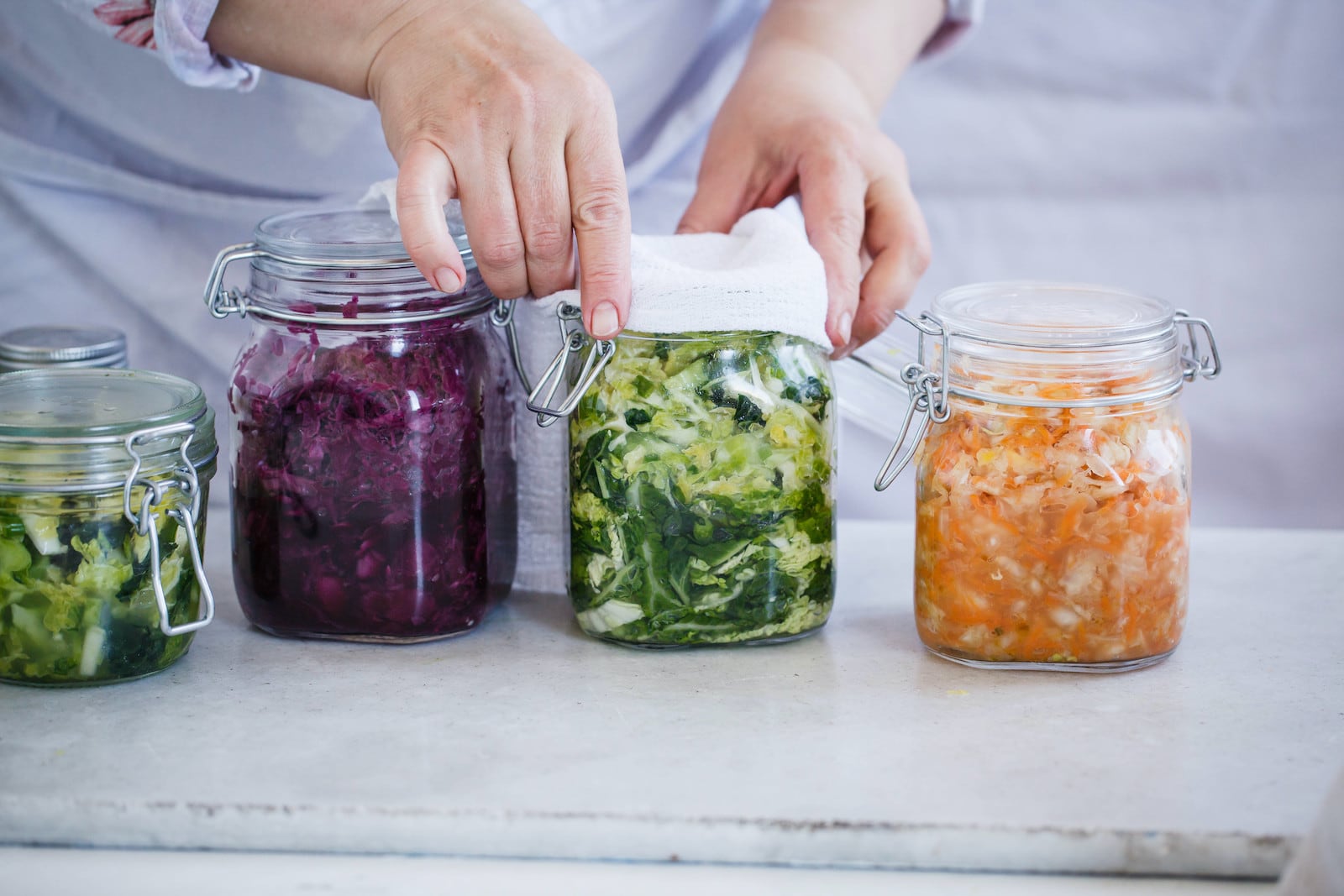Introduction:
In the world of culinary exploration, DIY fermentation has emerged as a fascinating and time-honored practice. With its roots deeply embedded in traditional food preservation methods, fermentation has experienced a revival in the United Kingdom as a smart and sustainable way to enhance flavors, boost nutritional value, and extend the shelf life of various foods. This article delves into the art and science of DIY fermentation, offering smart techniques for preserving foods that resonate with the interests and tastes of the UK audience.
The Resurgence of Fermentation
Historical Significance:
Fermentation is an ancient food preservation method that dates back centuries. Its roots can be traced to various cultures worldwide, where it played a crucial role in preserving seasonal harvests and ensuring a year-round supply of nourishing foods.
Modern Rediscovery:
In recent years, DIY fermentation has experienced a resurgence as a result of a growing interest in traditional and artisanal food practices. The UK, with its rich culinary heritage, has embraced fermentation as a way to explore unique flavors and promote sustainable eating.
Health and Wellness Trends:
The rise of health and wellness trends has contributed to the popularity of fermented foods. Probiotics, naturally occurring in fermented products, are known for their digestive benefits and potential positive impacts on overall well-being.
Fermentation Basics: How It Works
Microbial Magic:
At its core, fermentation is a metabolic process carried out by microorganisms, typically bacteria, yeast, or molds. These microorganisms convert sugars and starches into alcohol or organic acids, creating an environment that inhibits the growth of harmful bacteria.
Lactic Acid Fermentation:
Lactic acid fermentation is a common method that involves the conversion of sugars into lactic acid by lactic acid bacteria. This process imparts a tangy flavor and acts as a natural preservative.
Anaerobic Environment:
Fermentation requires an anaerobic (oxygen-free) environment to thrive. This is often achieved by submerging the food in a brine or creating an airtight seal to prevent the entry of oxygen, fostering the growth of beneficial microbes.
DIY Fermentation Techniques
Vegetable Fermentation:
- Sauerkraut: Shredded cabbage is fermented with salt to create sauerkraut, a classic and tangy accompaniment to various dishes.
- Kimchi: A staple in Korean cuisine, kimchi involves fermenting vegetables, usually Napa cabbage and radishes, with a spicy blend of chili, garlic, and ginger.
Fruit Fermentation:
- Fermented Fruits: Berries, apples, and other fruits can be fermented to create flavorful and slightly effervescent treats.
- Fruit Kvass: A fermented beverage made by fermenting fruits in a sugar-water solution, creating a refreshing and probiotic-rich drink.
Dairy Fermentation:
- Yogurt: Dairy fermentation involves the conversion of lactose into lactic acid by beneficial bacteria. Homemade yogurt allows for customization with various flavors and textures.
- Kefir: A fermented milk drink that involves the use of kefir grains to introduce a diverse range of beneficial microorganisms.
Grain and Legume Fermentation:
- Sourdough Bread: Sourdough is a fermented bread that relies on wild yeast and lactobacilli for leavening. Creating a sourdough starter is a key step in the fermentation process.
- Fermented Beans: Fermented soy products like miso and tempeh are rich in probiotics and add depth of flavor to dishes.
Tools and Equipment for DIY Fermentation
Fermentation Vessels:
- Mason Jars: Widely used for small-batch fermentations, mason jars provide an airtight seal and are suitable for vegetables, fruits, and pickles.
- Fermentation Crocks: Specially designed crocks with water-sealed lids create an anaerobic environment, ideal for larger-scale fermentations.
Airlocks and Weights:
- Airlocks: Attachable to jars or lids, airlocks allow gases produced during fermentation to escape while preventing the entry of oxygen.
- Fermentation Weights: Placed inside jars to keep food submerged in brine, weights help prevent mold growth by ensuring an anaerobic environment.
pH Strips and Thermometers:
- pH Strips: Essential for monitoring acidity levels during fermentation, pH strips help ensure the safety and quality of the final product.
- Thermometers: Monitoring temperature is crucial for controlling fermentation. Thermometers help maintain the ideal conditions for microbial activity.
Troubleshooting Common Fermentation Issues
Mold Formation:
Mold can develop if food is exposed to air during fermentation. Ensuring proper submersion and using weights can prevent mold growth.
Off Odors:
Unpleasant odors may indicate spoilage or the presence of undesirable bacteria. Maintaining cleanliness and using high-quality ingredients can prevent off odors.
Inconsistent Texture:
Variations in texture may result from inconsistent temperatures or improper fermentation times. Adhering to recommended guidelines can help achieve the desired texture.
Safety Considerations in DIY Fermentation
Hygiene Practices:
Maintaining cleanliness in both tools and ingredients is crucial to prevent the growth of harmful bacteria during fermentation.
Proper Storage:
Once fermentation is complete, storing the fermented foods in a cool environment, such as a refrigerator, helps maintain their quality and safety.
Monitoring pH Levels:
Regularly testing and monitoring pH levels ensure that the fermented products remain within the safe and desirable range.
Experimenting with Flavor Combinations
Herbs and Spices:
Adding herbs and spices to fermented foods enhances flavor profiles. Experiment with combinations like dill and garlic for pickles or coriander and cumin for sauerkraut.
Citrus Zest and Juices:
Citrus zest or juices can introduce brightness and acidity to fermented creations. Lemons, oranges, or limes can add a refreshing twist to sauerkraut or fruit ferments.
Sweet and Savory Blends:
Play with the balance of sweet and savory flavors by incorporating ingredients like honey, maple syrup, or even dried fruits into the fermentation process.
Fermentation as a Sustainable Practice
Reducing Food Waste:
Fermentation is an excellent way to utilize excess produce and reduce food waste. Almost any vegetable, fruit, or dairy product can be transformed into a delicious and preserved creation.
Preserving Seasonal Harvests:
By harnessing the power of fermentation, individuals can enjoy the flavors of seasonal harvests throughout the year, preserving the essence of locally sourced and seasonal produce.
Minimal Energy Consumption:
Unlike some food preservation methods that require significant energy inputs, fermentation is a low-energy and eco-friendly practice, aligning with sustainable living principles.
Conclusion: A Journey into the World of DIY Fermentation
Embarking on the journey of DIY fermentation opens a gateway to a world of flavors, traditions, and sustainable culinary practices. As the trend gains momentum in the United Kingdom, individuals are discovering the joys of crafting their own probiotic-rich foods, from tangy sauerkraut to creamy yogurt and beyond. Armed with an understanding of fermentation basics, the right tools, and a spirit of experimentation, UK residents can embrace the art of fermentation, transforming their kitchens into hubs of creativity, flavor, and sustainable living. In an era where the intersection of tradition and innovation defines culinary experiences, DIY fermentation stands as a testament to the timeless art of preserving and enhancing foods in a smart and delicious manner.

